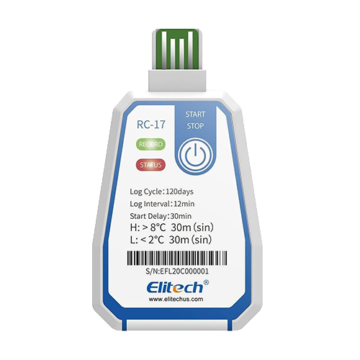Many products that we use on a daily basis come with approved product specifications and can be used for a limited period of time only if they are stored in accordance with manufacturer’s guidelines. Fruits, vegetables, meats, medicines, and many other temperature sensitive goods require stringent temperature control and this is why temperature monitoring systems have become an essential component of modern-day logistics.
Recent studies have found that almost 12% of all food waste can be attributed to temperature related irregularities during the distribution phase. Also, according to the World Health Organization (WHO), temperature changes can lead to degradation of pharmaceutical products in terms of their potency, strength, and efficacy. Therefore, if you are a retail store owner or distributor dealing with temperature-sensitive items, it is important for you to invest in a temperature monitoring system.
Temperature Monitoring System Overview
Temperature monitoring systems are built around the idea of maintaining product freshness and reducing waste with use of technology. These systems are capable of controlling and reducing the temperature of any particular environment. By using these systems, it is possible to track, control, and regulate the temperature of any product during its storage and transportation. Therefore, there is no need to worry about the usability of your temperature-dependent products.
Some of the most important features of a temperature monitoring system include:
- Automatic alerts for high and low temperatures
- Instant notifications even for the slightest temperature changes.
- Automatic generation of reports that can help analyse trends and implement corrective measures accordingly.
- Eliminates the need to manually call or check for receiving updates or maintaining updated temperature reading.
- Based on the type of product, users can customise indicators for maximum and minimum thresholds.
Things to Look for:
While shopping for a temperature monitoring system, there are multiple factors to be taken into account.
- In your products’ lifecycle, over-time temperature data provides an objective source of facts. This data will help you manage incidents and prevent loss in a more proactive manner.
- Package-level monitoring is another important benefit that you need for handling compact and portable shipments. If any individual packages were kept outside cold rooms for a longer duration compared to the rest of the shipment, their temperatures need to be tracked. To ensure proper package-level monitoring, sensors must be a part of the shipment. Ensure that the hardware remains attached to every other package and is connected to the parent system. This will allow the containers to be monitored easily.
- Broken equipment or faulty sensors can lead to vague reporting data and false alerts. To guarantee best results, it is important that the data collected from your temperature monitoring system is reliable. While tracking the temperature of products, data is everything for you. Therefore, invest in a reliable system that allows you to make the most of the analytics.
- Finally, your temperature monitoring system must be easy to understand so that an average user is able to set up, continually fine-tune, and debug or troubleshoot the system. If you opt for a system that is difficult to configure, both your time and money may be wasted.
At Shockwatch, we offer the most advanced range of temperature monitoring devices, indicators and recorders designed specifically for handling different types of temperature sensitive products. Please contact us today to find out more.


